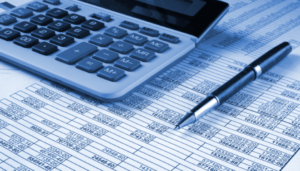As a business owner, you likely started your business because of a great product and a passion for your craft. Whether innovating the production of chocolate or sharing your family’s bread recipe with the world, analyzing accounting standards and tracking leases are probably low on your list of leisure priorities.
For years, we have been hearing about how the new lease accounting standard is going to shake up the way businesses record leases. For the Food and Beverage industry in particular, this new standard will have a significant effect on not only your balance sheet but the way banks and investors view your business.
Background of the New Leasing Standard
In today’s globalized world, investor portfolios include domestic and international businesses. This has led to a need for consistent accounting methods to compare businesses using the same standards. The new lease accounting standard is an effort to bridge one of the largest gaps between U.S. generally accepted accounting principles (GAAP) and International Financial Reporting Standards (IFRS).
Under current GAAP, some leases are recorded on the balance sheet, and other leases are just disclosed in the footnotes. The new lease rules will require that all leases over one year be recorded on the balance sheet.
What to Record
For businesses that tend to be “lease heavy,” it’s best to start planning for these changes sooner rather than later. For Food and Beverage businesses, leases include everything from facilities and manufacturing equipment to trucks and delivery vehicles. For companies with restaurants and storefronts, leases include suites, mall stands, and retail space. Businesses will need to collect all of their leases, know the terms, and record the values on their balance sheets.
Facility leases not previously recorded on the balance sheet must now be recorded as a “right to use” asset at the present value of the lease payments. This balance sheet loading is going to have a significant effect on how statements are viewed and understood.
Potential Impact
Suppose you have a line of credit or term loan through a bank. In that case, the bank will typically require the business to maintain certain financial metrics, such as minimum working capital or maximum debt-to-equity ratios. These ratios indicate how much equity you have at risk compared to how much others are at risk based on what you owe.
Additionally, it measures the company’s ability to make payments as they come due. The resulting increase in liabilities will negatively affect both ratios. It’s a good idea to consult with your bank and adjust your ratios so you are not out of compliance with your loan covenants.
Helpful Tips
Start early, be meticulous, and seek professional guidance. If your business is particularly lease-heavy, there are software packages that will help track lease details and automatically calculate depreciation on the related assets.
Remember that you are not alone in the food and beverage community or the community. For public companies, this standard is effective for fiscal years beginning after December 15, 2018. Private companies would pay attention to lender and investor reactions and look at examples of public filings before the private company implementation date the following year.
Your CPA can help facilitate conversations with your bank and investors. Lending institutions will see a significant shift in how they view balance sheets, and CPAs can help clear up the confusion. Work with your bank and CPA to create a pro forma of what your balance sheet will look like with your leases recorded. It’s best to have these conversations well in advance to maximize the flexibility of your banks and lenders. Contact us to get help today.

















